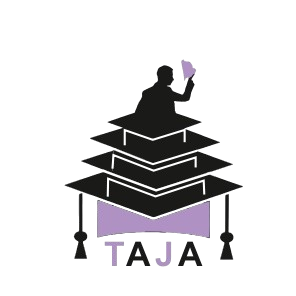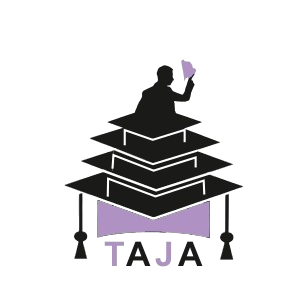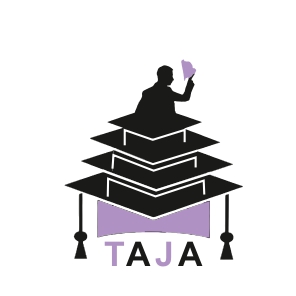Attending graduate school is a necessary step for some students as they work toward their chosen profession. But before being admitted, grad school hopefuls will likely need to pass one of several graduate school entrance exams.
Those preparing for a career in the legal profession will likely take the Law School Admission Test, while those planning a career in the medical field will sit for the Medical Colleges Admission Test. Individuals weighing business school will likely take the Graduate Management Admission Test.
Another option for grad school hopefuls is the Graduate Record Examination, which is accepted by a variety of master’s, Ph.D. and professional degree programs in an array of disciplines. It has also become common in recent years for some business schools and law schools to accept GRE scores in lieu of the GMAT and LSAT. Test-takers can find the list of B-schools and law schools that accept the exam on the GRE website.
Some schools have moved to a test-optional approach, where students elect whether to send scores. An American Bar Association proposal to drop the rule that accredited law schools must require standardized test scores has been tabled for now, meaning J.D. hopefuls continue to need to pass the LSAT or GRE to be admitted.
Grad school advisers say it’s essential to get to know the test you are taking and to prep for it carefully. Here’s a general overview of the exams, including how long they take and how much they cost.
LSAT
The LSAT assesses whether someone is prepared for legal education, which can be rigorous and typically lasts three years. The exam, which can be taken at a test center or remotely, is made up of two parts: a multiple-choice portion divided into several sections and an unscored written essay. The multiple-choice sections test candidates on reading comprehension as well as analytical and logical reasoning. The writing portion is done online using secure software that can be installed on a personal device and taken as early as eight days prior to the date of the multiple-choice test.
Test-takers are scored on a range from 120 to 180. Scores in the high 160s are above the median among admitted students at most ranked law schools in the U.S. News Best Law Schools rankings, but students enrolled at certain prestigious and selective programs typically have scores of 170 or higher.
The exam costs $222 for the 2023-2024 testing cycle. Test-takers who need financial assistance to pay for the exam can apply for a fee waiver if eligible.
While an applicant’s LSAT score is important, it is not the only factor in an admissions decision. Law schools typically consider multiple factors when admitting candidates, including personal statements, academic transcripts, resumes, diversity statements and GPAs. Admissions offices also weigh an applicant’s work experiences and extracurricular activities and further vet candidates through admissions interviews.
MCAT
Future doctors need the ability to master new information rapidly and communicate well in a patient-centered system. The MCAT assesses whether medical school applicants have those skills as well as the conceptual understanding and analytical skills necessary for success in medical education. Results from this test help admissions offices gauge an applicant’s preparedness for medical school.
The test was overhauled in April 2015, with scores reported in four sections:
- Biological and Biochemical Foundations of Living Systems
- Chemical and Physical Foundations of Biological Systems
- Psychological, Social, and Biological Foundations of Behavior
- Critical Analysis and Reasoning Skills
Each section is scored separately and weighted equally, with scores ranging from 472 to 528. The overall score is determined by the sum of section scores, which range from 118 to 132.
According to the MCAT fee schedule posted on the Association of American Medical Colleges website, the standard registration fee for the MCAT is $330 for the 2023 testing year, up $5 from 2022. However, med school hopefuls with difficult financial circumstances may qualify for the AAMC’s fee assistance program, which would bring the registration fee down to $135.
The exam lasts 7 1/2 hours, with 6 hours and 15 minutes spent on the exam, 50 minutes for breaks and about 20 to 25 minutes for logistical tasks at the beginning and end of the test. It includes four multiple-choice sections, each lasting 90 or 95 minutes.
Almost all U.S. medical schools and many Canadian schools require med school hopefuls to submit MCAT exam scores, and many do not accept scores that are more than three years old, according to the AAMC website.
MCAT test dates, scheduling deadlines and score release dates for test-takers in U.S. states are posted on a calendar for the AAMC website, and there is a similar digital document for test-takers in Canada. Test dates within U.S. territories and outside the U.S. are also listed on the AAMC site.
GMAT
Students weighing business school generally take the GMAT, which will have a new look come Nov. 7, 2023, when the GMAT Focus Edition launches and the previous version is phased out.
Two sections from the previous version, Quantitative Reasoning and Verbal Reasoning, remain on the GMAT Focus Edition and are joined by a new Data Insights section, which tests candidates’ skills in data analysis, data interpretation, data visualization and data-driven decision-making. Each section takes 45 minutes, making the test more than an hour shorter than the previous version, at 2 hours and 15 minutes.
The Graduate Management Admission Council announced the changes in May 2023, which come amid declining GMAT test-taking participation as well as a growing post-pandemic trend of business schools either accepting the GRE in lieu of the GMAT or going completely test-optional.
The new version will have a slightly different scoring scale than the previous one, ranging from 205 to 805 rather than from 200 to 800. The change was made so that test-takers and schools can distinguish which test version a score is from, experts say. Scores from the previous version are still valid for five years.
The cost to take the test varies around the world, with the online version costing $300 in the U.S. and the testing-center version costing $275. Although the new version is shorter, the price will remain the same, GMAC announced.
GRE
There are two variations of the GRE: the general test and the subject tests. The general test is administered by the Educational Testing Service, commonly known as ETS, and measures overall academic readiness for graduate school. Subject tests are content-specific exams that assess a person’s mastery of a particular field of study, such as physics or psychology. Subject tests are tailored to students who have majored in or extensively studied the particular exam subject.
The GRE, which was recently overhauled, tests verbal and quantitative reasoning as well as analytical writing and is completed in 1 hour and 58 minutes. The analytical writing section contains just one question – “Analyze an Issue” – which is completed in 30 minutes, while the quantitative and verbal reasoning sections contain 27 questions each and are completed in 47 and 41 minutes, respectively.
Verbal and quantitative scores range from 130 to 170, and these scores are always a whole number. Writing scores range from 0 to 6, and these scores are assigned in half-point increments. Scores on GRE subject tests range from 200 to 990.
On the psychology subject test, test-takers not only receive an overall score but also several subscores, ranging from 20 to 99, reflecting their knowledge of particular topics within the academic discipline.
In most locations across the world, the general test costs $220. However, those taking it in Australia pay $228 while those in China pay $231.30. Subject tests cost $150 everywhere.


